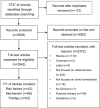Advances in mechanism and management of bone homeostasis in osteonecrosis: a review article from basic to clinical applications
- PMID: 39311934
- PMCID: PMC11745759
- DOI: 10.1097/JS9.0000000000002094
Advances in mechanism and management of bone homeostasis in osteonecrosis: a review article from basic to clinical applications
Abstract
Osteonecrosis, characterized by bone cell death leading to impaired bone recovery, causes challenges in bone homeostasis maintenance. Bone homeostasis relies on the delicate balance between osteoclasts and osteoblasts, encompassing a series of complex and strictly regulated biological functions. Current treatments, including conservative therapies and surgeries, often fall short of expected outcomes, necessitating a reorientation towards more effective therapeutic strategies according to the pathogenesis. In this review, the authors hierarchically outlined risk factors, emerging mechanisms, and last-decade treatment approaches in osteonecrosis. By connecting mechanisms of bone homeostasis, the authors proposed future research directions should be focused on elucidating risk factors and key molecules, performing high-quality clinical trial, updating practice, and accelerating translational potential.
Copyright © 2024 The Author(s). Published by Wolters Kluwer Health, Inc.
Conflict of interest statement
The authors declare no conflicts of interest.
Sponsorships or competing interests that may be relevant to content are disclosed at the end of this article.
Figures





Similar articles
-
How Do Extracellular Vesicles Play a Key Role in the Maintenance of Bone Homeostasis and Regeneration? A Comprehensive Review of Literature.Int J Nanomedicine. 2022 Nov 17;17:5375-5389. doi: 10.2147/IJN.S377598. eCollection 2022. Int J Nanomedicine. 2022. PMID: 36419718 Free PMC article. Review.
-
A decade of bisphosphonate bone complications: what it has taught us about bone physiology.Int J Oral Maxillofac Implants. 2014 Mar-Apr;29(2):e247-58. doi: 10.11607/jomi.te61. Int J Oral Maxillofac Implants. 2014. PMID: 24683588
-
Oestrogen effects on osteoblasts and osteoclasts.Ann Med. 1993 Aug;25(4):361-71. doi: 10.3109/07853899309147298. Ann Med. 1993. PMID: 8217102 Review.
-
Birth and death of bone cells: basic regulatory mechanisms and implications for the pathogenesis and treatment of osteoporosis.Endocr Rev. 2000 Apr;21(2):115-37. doi: 10.1210/edrv.21.2.0395. Endocr Rev. 2000. PMID: 10782361 Review.
-
Cellular communications in bone homeostasis and repair.Cell Mol Life Sci. 2010 Dec;67(23):4001-9. doi: 10.1007/s00018-010-0479-3. Epub 2010 Aug 8. Cell Mol Life Sci. 2010. PMID: 20694737 Free PMC article. Review.
References
-
- Quan H, Ren C, He Y, et al. . Application of biomaterials in treating early osteonecrosis of the femoral head: research progress and future perspectives. Acta Biomater 2023;164:15–73. - PubMed
-
- Lamb JN, Holton C, O’Connor P, et al. . Avascular necrosis of the hip. BMJ (Clinical Research ed) 2019;365:12178. - PubMed
-
- Perry DC, Machin DM, Pope D, et al. . Racial and geographic factors in the incidence of Legg-Calve-Perthes’ disease: a systematic review. Am J Epidemiol 2012;175:159–166. - PubMed
-
- Littooij AS, Kwee TC, Enriquez G, et al. . Whole-body MRI reveals high incidence of osteonecrosis in children treated for Hodgkin lymphoma. Br J Haematol 2017;176:637–642. - PubMed
Publication types
MeSH terms
LinkOut - more resources
Full Text Sources
Medical

